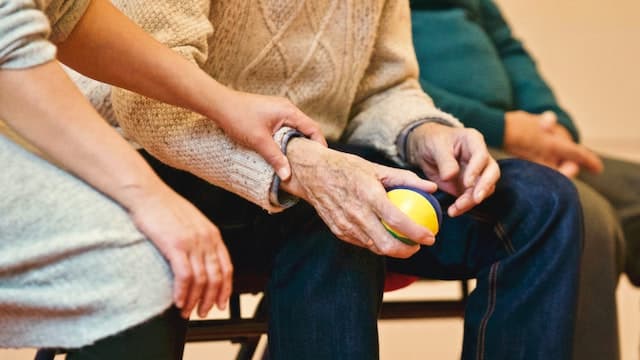Technology And Onboarding Processes: Revolutionizing Patient Care
The face of patient care has evolved significantly over the last few decades, and one of the primary catalysts driving this transformation is technology.
Alongside technological advancements, modern onboarding processes, which incorporate digital solutions, are playing a pivotal role in reshaping the healthcare sector.
This article delves into how technology and innovative onboarding methods are revolutionizing the quality and delivery of patient care.

What Will We Learn?
Electronic Health Records (EHRs)
The introduction of EHRs has transformed the way patient information is stored and shared.
These digital records ensure that all patient data, including medical history, medication lists, and diagnostic results, are available in real-time for medical professionals.
This instantaneous access reduces the risk of medical errors and ensures that patients receive consistent and informed care, irrespective of which healthcare professional they see.
Telemedicine
Telehealth solutions allow patients to consult with healthcare professionals without physically visiting a clinic.
Especially crucial during pandemic situations, telemedicine ensures that patients, especially those in remote locations, can access care.
Not only does this save time, but it also ensures that a broader audience receives quality healthcare.
Wearable Tech and IoT Devices
Smart wearables, like heart rate monitors, glucose meters, and sleep trackers, enable patients to monitor their health continuously.
These devices often come with apps that provide insights, helping patients to understand their health better.
Healthcare professionals can also access this data (with the patient’s consent) to provide more tailored advice and treatments.
Enhanced Onboarding Processes with AI And Machine Learning
With the introduction of AI and Machine Learning, onboarding processes in hospitals have become more efficient.
For example, AI can predict which patients are more likely to miss appointments, allowing hospitals to send reminders or reschedule as needed.
Similarly, machine learning algorithms can help in diagnosing diseases based on patterns that might be overlooked by human eyes.
Virtual Reality (VR) In Patient Care
VR is being used for patient rehabilitation, pain management, and even in therapy sessions for mental health patients.
It provides a controlled environment where patients can undergo treatment or engage in activities that help in their recovery process.
Rugged Medical Technology
In challenging environments, whether it’s a bustling emergency room or a remote field hospital, the durability and reliability of medical equipment become paramount.
This is where rugged medical technology comes into play.
These are devices and equipment designed specifically to withstand harsh conditions, including shocks, water, dust, and extreme temperatures.
For example, rugged tablets used in ambulances or in-field emergency situations can endure vibrations, sudden drops, and spills while maintaining functionality.
These devices often come with reinforced exteriors, waterproof seals, and screens readable under intense sunlight.
The rise of rugged medical technology ensures that healthcare professionals can reliably access digital tools and information, irrespective of the external conditions, ensuring uninterrupted patient care even in the most demanding scenarios.
Simplified Registration Processes
Digital onboarding solutions, like patient portals, allow patients to fill in their details, upload necessary documents, and even schedule appointments online.
This not only reduces administrative work but also minimizes errors that may arise from manual data entry.
Continuous Learning and Training
With the help of tech-driven onboarding platforms, medical professionals can keep themselves updated with the latest in medical science.
Virtual seminars, online courses, and even augmented reality can provide hands-on experience and training without the need to be physically present.
Chatbots and Automated Customer Service
The digital age has brought forth the rise of chatbots in various sectors, including healthcare.
Chatbots serve as automated customer service representatives, addressing common queries patients might have, from appointment schedules to medication details.
Not only do they offer immediate responses, ensuring patients don’t feel ignored, but they also free up human resources for more pressing issues.
Furthermore, with advancements in AI, these chatbots are becoming increasingly sophisticated, capable of understanding and handling more complex patient concerns.
Personalized Treatment Plans with Big Data
Big Data is changing the way medical professionals approach treatments.
By analyzing vast amounts of patient data, medical professionals can now identify patterns, predict health trends, and even foresee potential complications a patient might face.
This allows them to devise more personalized treatment plans, tailored to each patient’s unique needs and genetic makeup.
The culmination of Big Data with AI means healthcare is becoming more proactive rather than reactive.
Remote Monitoring for Chronic Patients
For patients with chronic diseases, constant hospital visits can be tiring and discouraging.
Remote monitoring tools, which allow medical professionals to track a patient’s health in real-time from a distance, are proving to be a game-changer.
These tools ensure that any irregularities in a patient’s health metrics are immediately flagged, allowing for swift interventions.
This not only offers peace of mind to patients but also ensures they get timely care without always needing to visit a hospital.
The integration of technology in healthcare isn’t just about fancy gadgets and software; it’s about drastically improving the quality of patient care.
By making processes more efficient, reducing errors, and ensuring that both patients and medical professionals have all the resources they need at their fingertips, technology and onboarding processes are indeed changing the face of patient care for the better.
The ongoing collaboration between tech experts and healthcare professionals will undoubtedly continue to yield innovations that further enhance patient care.
See also: Root Canals and Systemic Health
